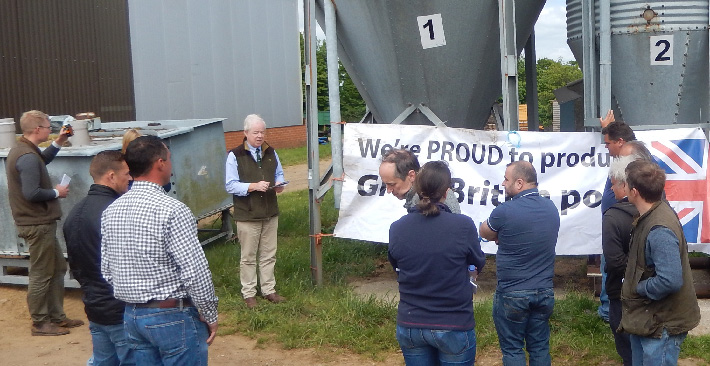Although demand remains relatively firm, once again there were no fireworks today with the SPP virtually unchanged at 132.57p and spot quotes at generally similar levels A few pigs were being rolled, mainly due to plant breakdowns, but most of the big processors will be operating as usual on Bank Holiday Monday in 10 days’ time, rather than heading for the beach (or the umbrella).
Despite all of the uncertainty about the political and financial situation in Greece, the euro held its nerve to some extent trading today worth 71.98p compared with 71.45p a week ago.
Unfortunately, however, this slight move in our favour on the currency market failed to filter through to cull sow quotes, which have remained at depressingly low stand-on levels with most traded just in the 50p to 53p/kg range, which means that a typical cull sow is only averaging about £70/head, which is half the value a year ago.
The weaner market continues to suffer from a lack of any particular enthusiasm, with the latest AHDB weaner averages still under pressure and something of a buyers’ market remains with the 30kg weaner average quoted at £43.61/head and 7kg weaners at £33.18/head.
Indoor producers who are able to turn out in excess of 25 pigs/sow/year might still be breaking even or earning a modest profit, but it’s much tougher for the outdoor producers where productivity is at lower levels and feed costs are higher.
Grain prices continue to slide with the latest ex-farm spot trades of feed wheat struggling to make much more than £100/t and barley at a significant discount.
Futures prices are also continuing to reflect recent bearish trends, with November feed wheat quoted on the LIFFE market at £115.25/t and March 2016 at £120.25/t.
Although the latest trade data released by the USDA contributed to modest rises in grain and oilseed prices, analysts are reporting this could be short term as new crop maize and soya bean exports sales are still lagging behind last years’ levels and new-crop wheat sales are also continuing to flag up weaker trends to the benefit of pig producers (but not arable farmers).
Proteins have also closed at lower levels with Brazilian soya meal down £5 on the week at £179/t ex-Kent influenced by higher USDA 2015/2016 crop forecasts three million tonnes higher than previously.
And finally, hopes are emerging that falls in Chinese pigmeat production that are likely to be about 6.5% this year may, to some extent, come to the rescue of European pigmeat prices, which could fill a 600,000t vacuum. But don’t forget that the US and Canada are also highly efficient and poised to fill any gaps in the supply chain caused by the recent cull of approximately 10 million sows in the huge Chinese herd.




